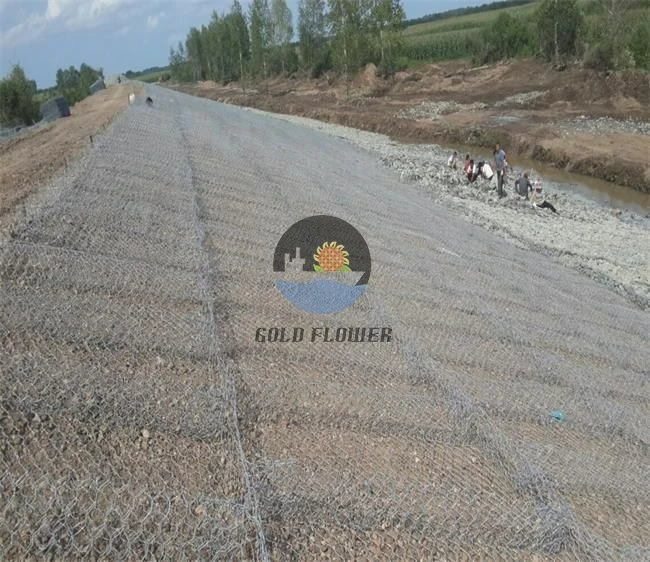Jan . 06, 2025 11:07 Back to list
wire netting
Wire netting, also known as mesh fencing, has become an essential component in various industries and domestic settings. This multifaceted product is appreciated for its durability, versatility, and cost-effective nature. Understanding the importance of wire netting can help guide consumers and professionals alike towards making informed decisions.

Wire netting, typically made from galvanized steel, stainless steel, or PVC-coated wire, offers a corrosion-resistant surface that ensures longevity even in adverse weather conditions. This attribute makes it an excellent choice for outdoor applications, including perimeter fencing, garden protection, and livestock enclosures. The materials used in constructing wire netting contribute heavily to its robustness and adaptability under different environmental circumstances.
One of the primary reasons wire netting is favored is its versatility. In agricultural settings, it serves as a protective barrier to safeguard crops from pests and livestock. Its mesh design, which can vary in size, provides an ideal balance between strength and visibility. Farmers often praise wire netting for its ease of installation and minimal maintenance requirements, allowing them to focus more on their core activities rather than frequent repairs.

In industrial contexts, wire netting plays a crucial role in ensuring safety. It is widely used as machine guards, shelving, and storage solutions that require ventilation yet still need sturdy protection. Its resilience against rust makes it suitable for use even in environments with high humidity or exposure to chemicals. Engineers and safety experts consistently recommend wire netting for these purposes due to its high tensile strength and reliability under stress.
Domestic use of wire netting spans from simple DIY garden projects to sophisticated landscape designs. Enthusiasts find that wire netting is an excellent medium for supporting climbing plants, creating aviaries, or even shaping garden sculptures. Its availability in various forms and coatings allows for customization to fit specific aesthetic and functional requirements while maintaining a discreet presence in residential settings.
wire netting
The economic advantages offered by wire netting further bolster its popularity. Its production costs are relatively low compared to other fencing alternatives like wood or metal panels, making it an attractive option for large-scale projects. Additionally, its lightweight nature reduces transportation costs and simplifies handling during installation. For property developers and contractors, this translates to lower overall expenditure without compromising on quality or performance.
In terms of security, wire netting offers substantial benefits. It acts not only as a physical barrier but also as a psychological deterrent. Its transparent nature allows for continuous surveillance, which is advantageous in securing sensitive areas like construction sites and airports. The ability to spot threats without obfuscation enhances monitoring processes, making wire netting a preferred solution for security experts.
Another noteworthy aspect is its eco-friendliness. Many wire netting products are recyclable, thereby reducing environmental impact. This attribute is increasingly critical in our age of sustainability, where industries prioritize reducing their carbon footprint. Environmental specialists advocate for the use of wire netting, citing its green credentials as a driving force for its adoption in both commercial and residential applications.
When considering the purchase of wire netting, it is essential to consult with industry professionals to choose the appropriate type and gauge for the intended application. Expertise in installation and material selection can significantly affect the performance and longevity of the product. Trusting seasoned suppliers and installers ensures that the wire netting meets all safety standards and functional expectations.
In conclusion, wire netting's practicality, reliability, and cost-efficiency make it an invaluable asset across multiple sectors. It stands as a testament to human ingenuity in resource utilization and problem-solving, providing simple yet effective solutions to complex challenges. Embracing its widespread use is not just a matter of economic sense but also a commitment to sustainable and secure living environments.
share
-
Safety Mesh for Windows – Durable Mosquito and Insect Protection Solutions
NewsJul.08,2025
-
12x24x1 Air Filter – High Efficiency Replacement for Improved Air Quality
NewsJul.08,2025
-
Premium Stainless Steel Mosquito Mesh - Durable, Rust-Resistant Protection for Windows & Doors
NewsJul.08,2025
-
Premium Stainless Steel Garden Mesh for Lasting Durability Best & High Quality Mesh Solutions
NewsJul.07,2025
-
Gold and White Blackout Curtains – Elegant Light Blocking & Insulation for Home
NewsJul.07,2025
-
Premium Spa Filter Cartridge for Clean Water Spa Pool Filters Cartridges for Jacuzzi Durable, high-efficiency spa filter cartridge for spas and jacuzzis. Improve water quality—order your pool filter cartridge now!
NewsJul.07,2025

